Indonesian Sea Monster Identified
Posted by: Craig Woolheater on May 17th, 2017
Monster of the deep? Or just a really funky dead whale?

Posted by: Craig Woolheater on May 17th, 2017
Monster of the deep? Or just a really funky dead whale?
Posted by: Markus Hemmler on September 14th, 2015
Let me add some explanations: In general it’s obviously a larger marine creature, so I considered larger known, recent marine creatures (namely cetacean or sharks) at first for identification and not a sturgeon as suggested.
Posted by: Karl Shuker on August 24th, 2015
Has the creature in these two photos from Arlene Gaal’s book In Search of Ogopogo ever been conclusively identified and, if so, what was it and does anyone have any published sources for the identification?
Posted by: Karl Shuker on July 14th, 2015
Mystery beasts come in all sizes and shapes, but in the case of globsters they are most famous not just for their great size but also for their conspicuous lack of any well-defined shape. Aptly named by American cryptozoologist Ivan T. Sanderson in the early 1960s, globsters (also dubbed blobsters or blobs) are generally huge, amorphous masses of decomposing tissue, usually rubbery and covered in fibrous ‘hair’, lacking any recognisable body parts or skeleton, which are regularly washed ashore on beaches around the world.
Read: Globsters Abounding! »
Posted by: Craig Woolheater on July 3rd, 2015
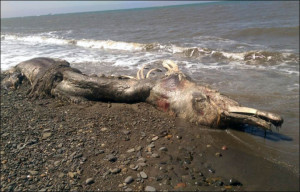
The remains of an unidentified sea animal with fur on its tail have been washed ashore in the Far East. Found near the airport at Shakhtersk, on Sakhalin Island, its appearance is unlike anything ever found in Russia.
Judging from the remains the creature was giant and about twice the length of a human, and it had a huge nose like a bird’s beak.
Posted by: Scott Mardis on March 7th, 2014
London artist John Conway recently painted a hypothetical reconstruction of what the infamous Zuiyo Maru carcass (found off New Zealand in 1977) might have looked like in life, assuming the carcass as found was an accurate representation of the living animal.

Read: Zuiyo Maru Carcass Comes to Life »
Posted by: Karl Shuker on September 1st, 2013
Sea monsters can be very deceiving, even when dead. It is well known that the decomposing carcase of a beached basking shark often transforms very dramatically, and deceptively, to yield what on first sight looks remarkably like a long-necked, four-flippered, slender-tailed, hairy plesiosaur-like creature. This is the so-called pseudo-plesiosaur effect. Similarly, when a sperm whale […]
Posted by: Craig Woolheater on August 22nd, 2013
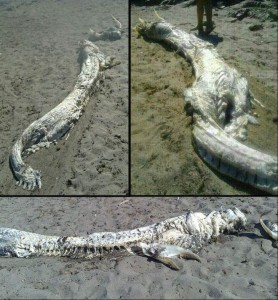
A series of pictures provided by Spanish Civil Protection on Aug. 16 shows the creature found by residents in the Spanish coastal village of Villaricos. The carcass, measuring four to five meters in length, was in an advanced state of decomposition.
Posted by: Loren Coleman on March 26th, 2012
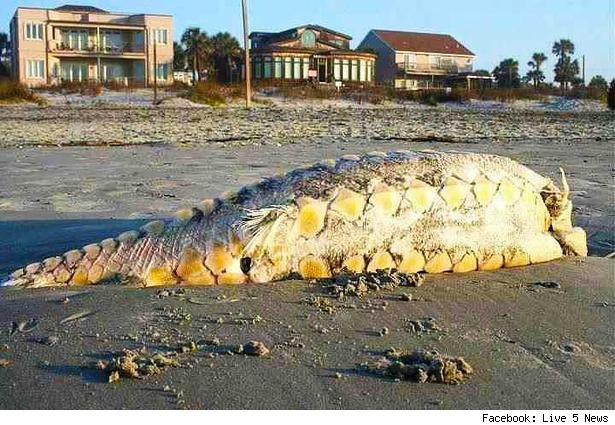
#Cryptozoology #SeaMonster
I do not feel we need to go so far as to call this Folly Beach’s Folly, now do we?
Posted by: Loren Coleman on February 2nd, 2012
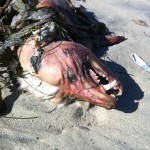
What is it?
#Skepticism #Chupacabras #MontaukMonster
As the beached-object in #SanDiego’s melodrama began to unfold, I was receiving other mystery-objects-found emails. Images.
Read: San Diego Diablo? »
Posted by: Craig Woolheater on July 20th, 2011
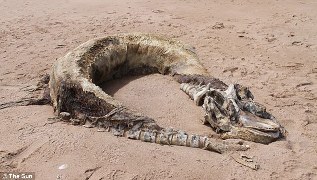
A couple were left shocked when they discovered the rotting body of a sea monster while walking along a beach.
Photos.
Attention: This is the end of the usable page!
The images below are preloaded standbys only.
This is helpful to those with slower Internet connections.
